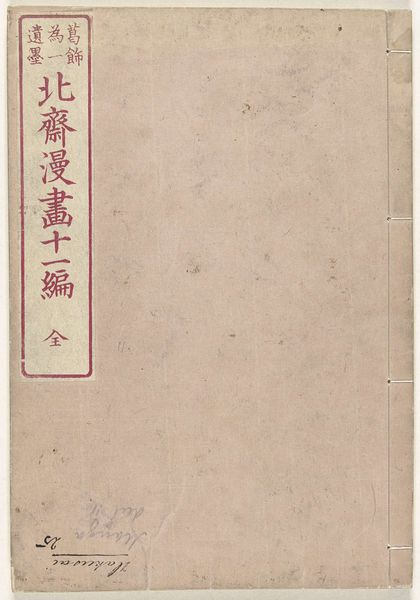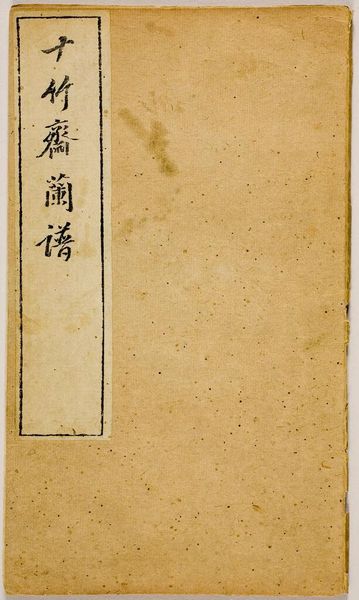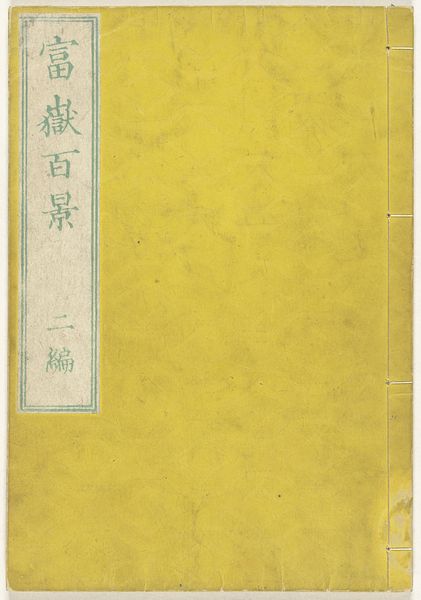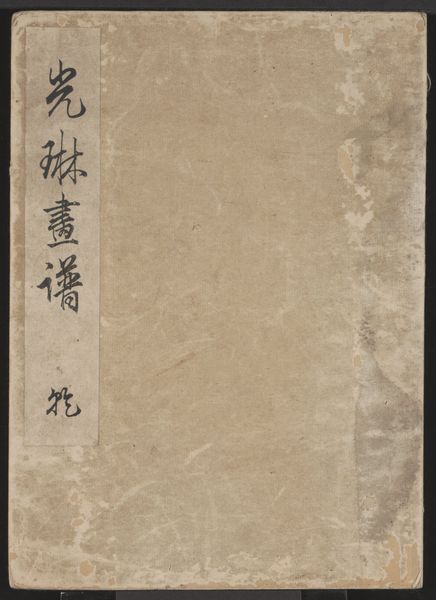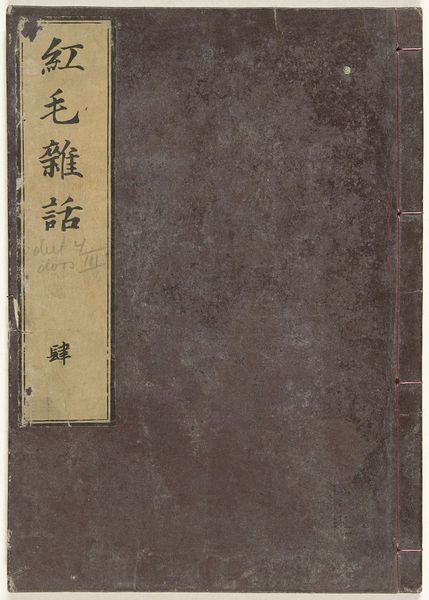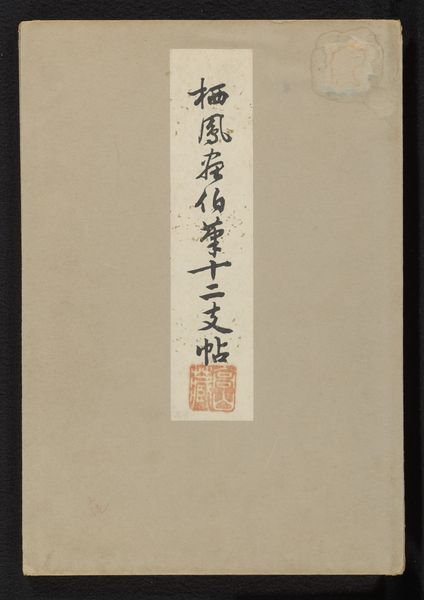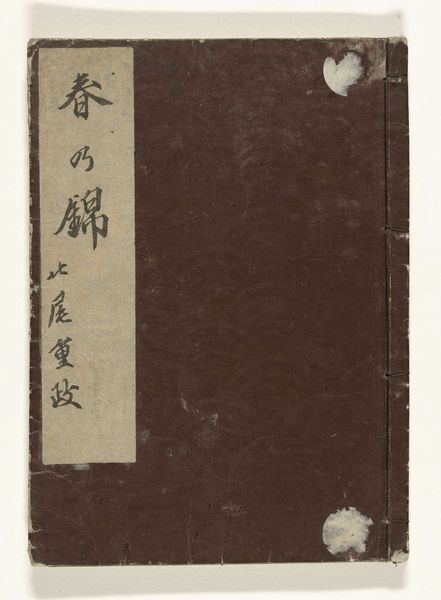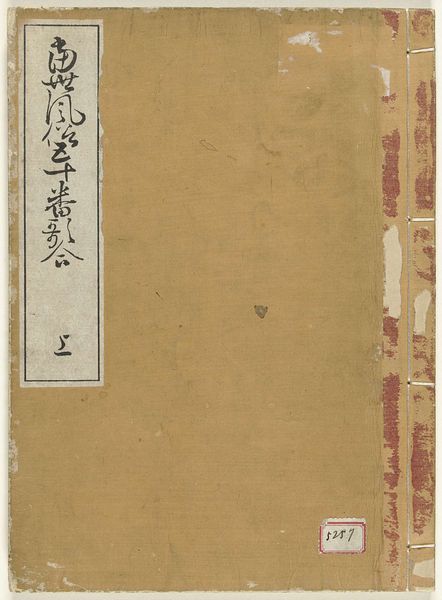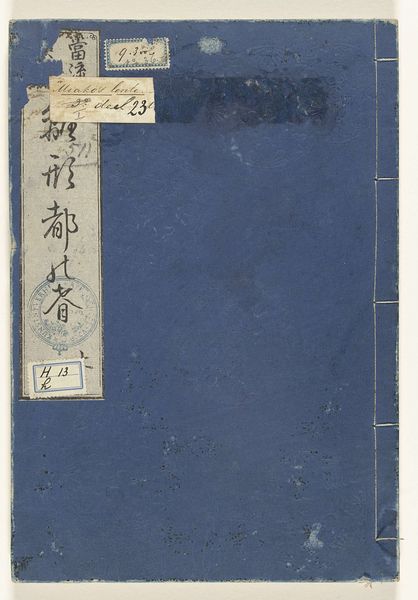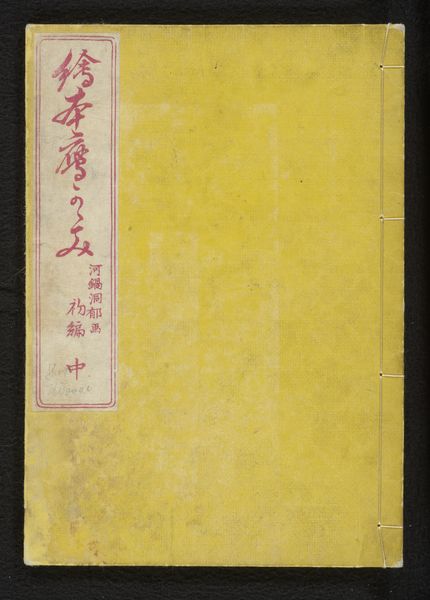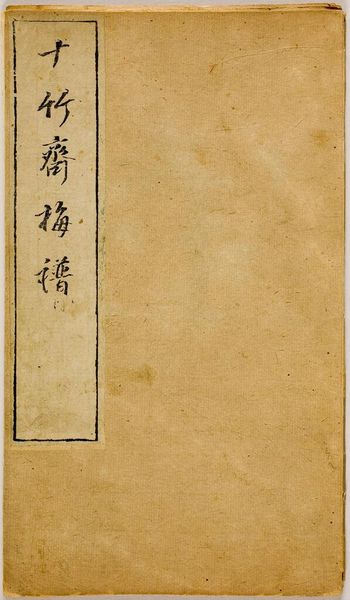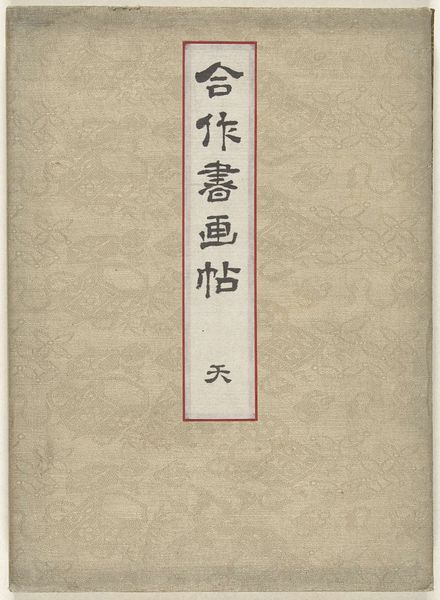
drawing, graphic-art, print, paper
#
drawing
#
graphic-art
# print
#
asian-art
#
paper
Dimensions: height 192 mm, width 124 mm
Copyright: Rijks Museum: Open Domain
Curator: Here we have Tanomura Chokunyū’s “Orchideeën” from 1880, currently held at the Rijksmuseum. It’s a print, a type of graphic art rendered on paper. Editor: Well, it strikes me as rather understated, almost minimalist. The beige of the paper, the stark vertical lines of text...it exudes a quietude. Curator: Precisely. Let's examine the composition more closely. Notice the considered placement of the calligraphic text. It functions as both title and design element. Semiotically, the texture of the paper adds depth without unnecessary ornamentation. Editor: True. But there's also the historical weight to consider. Orchids, in East Asian art, often represent refinement, beauty, and even solitude. Was Chokunyū commenting on these ideals during the Meiji era? Curator: It’s plausible. Though a Formalist reading focuses more on the inherent aesthetic of the line work, the spacing...how the void interacts with the inscription. There's a clear effort to emulate the "orchidaceous" aesthetic which values the interplay of positive and negative forms to guide the eye rhythmically across the page. Editor: And the way the book is bound with that very clean looking thread enhances that aesthetic. Curator: Indubitably. Editor: Beyond technique and materials, however, “Orchideeën” seems to whisper of resilience, a lone bloom in a harsh environment, as it were. Curator: A symbolic reading informed by nature… It is, perhaps, that tension between formalism and contextual understanding that keeps the image compelling. Editor: It's this very synthesis—the visual language merging with encoded meaning—that enables the print to still speak volumes. Curator: Indeed. A delicate harmony achieved through structure and significance, creating lasting impact.
Comments
No comments
Be the first to comment and join the conversation on the ultimate creative platform.
